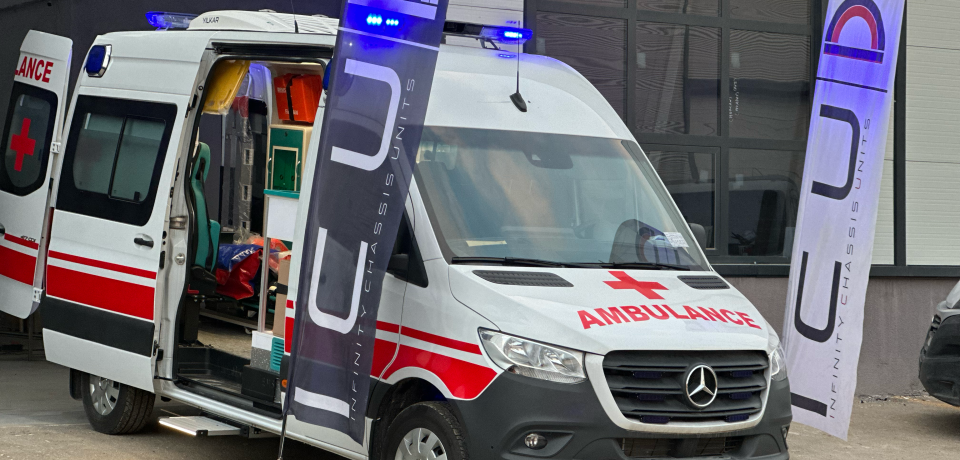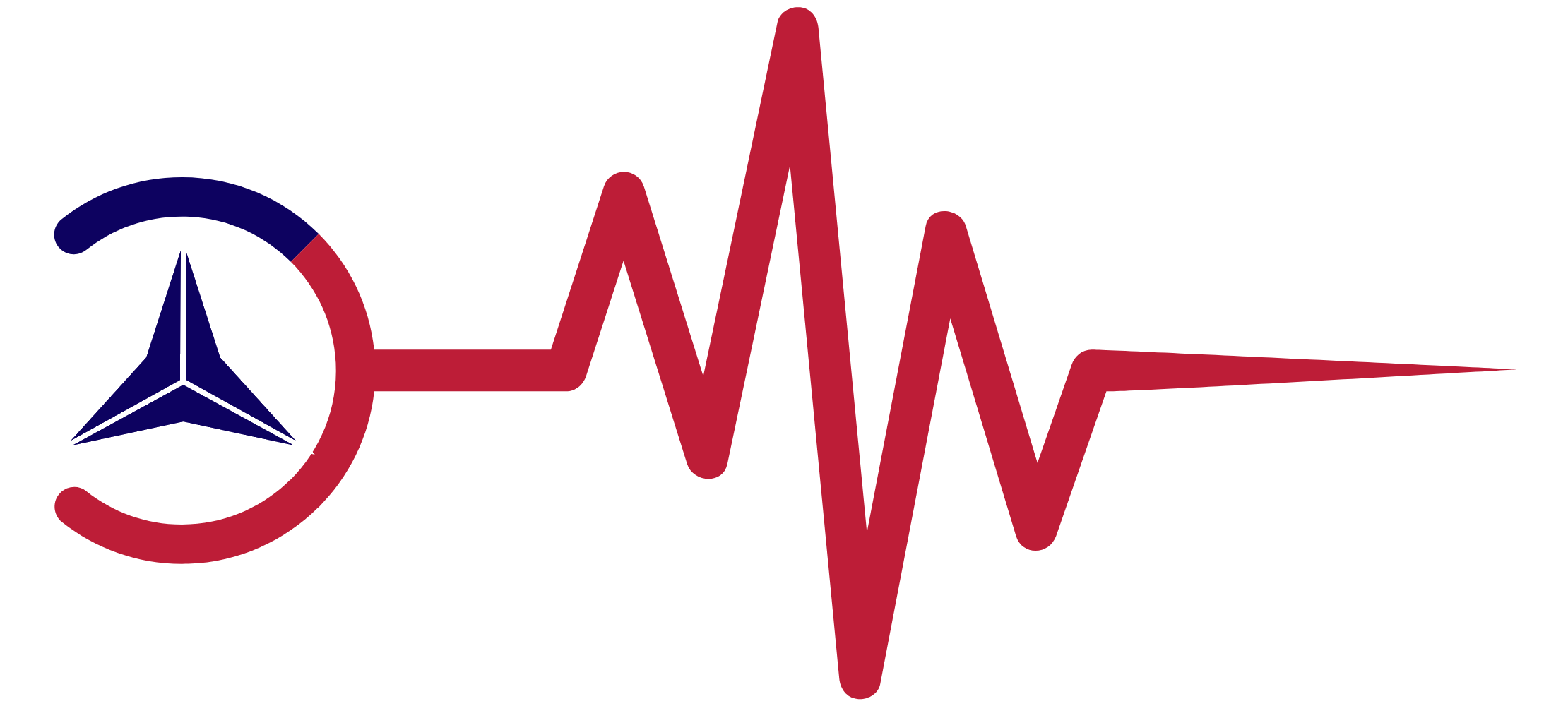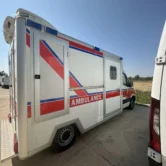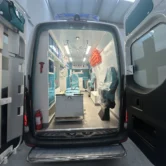
Technical Specifications and Features of Mercedes 417 CDI Ambulance Specifications
1. Introduction
Technical Specifications and Features of Mercedes 417 CDI Ambulance Specifications; Ambulances are the backbone of emergency medical services as they serve all patients timely and ensure the delivery of victims to health facilities. Ambulances are ideally used to quickly reach patients outside the healthcare facility and receive them for care efficiently. The technical specifications of ambulance vehicles act as guidelines for the engineering manufacturers, sales and service personnel, and potential buyers. Through efficient ambulances, millions of people are shifted to healthcare facilities annually. The emergency medical professionals and EMTs rely on technical vehicle specifications and expectations to meet certain features that help them save lives and provide comprehensive care during transportation. This document will benefit the ambulance industry at large as several individuals involved in public and private sectors are impacted by the design and operation of ambulance specifications to some extent. This literature is an effort not only to explain the features and designs of ambulances in technical terms but also to enhance the insights of surgeons and other healthcare professionals.
These features help in understanding the overall response of ambulance vehicles to various applications and specifications. The manufacturer delivers the ambulance design with the utmost utilization of space to accommodate all desired accessories that provide standards of care for the victims during transportation. These features also guide the utility of vehicle operations and brightness of floodlights. This description surely benefits the not-so-technical audience in understanding the capabilities and utilities of ambulances thoroughly. The rated power, engine capacity, torque, and fuel tank will guide in basic understanding of the efficiency of the ambulance. These features are technical ingredients for the overall performance of the vehicle and the ambulance, which is a mobile healthcare institution. The quick response model has the capacity for military industry standards, and the main model ambulance can adjust to seven stretchers maximum as per the requirement. These are the specifications for ambulance outlook. Any reader can comprehend the intelligence and elegance of this vehicle from these certain features.
1.1. Purpose of the Document
The present document offers an extensive overview of the technical specifications and characteristics of the Mercedes 417 CDI ambulances, including a clear illustration of the ambulance and the vehicle, their basic features, engine specifications and performance, gearbox specifications and performance, advanced features, vehicle dimensions and weight, and the list of optional equipment that could become part of the vehicles to be purchased. The above-mentioned details aim to provide a thorough explanation of the aforementioned vehicle-ambulance to healthcare organizations that might be considering procuring Patient Transport Ambulances. It should be noted, however, that there may be further improvements to the ambulances that could be made to enhance their suitability for emergency medical services provided in other situations. The present report is aimed at professionals in emergency medical services, such as paramedics and members of regulatory bodies who might not have previous knowledge of the automotive industry.
Ensuring the safety and performance of patients is an essential part of emergency medical services (EMS). This is achievable not only through the thorough training of medical and operational staff but also through the design of ambulances that are both safe and reliable. To understand the document better, it has been organized into the following sections: Section 1 (Purpose of the Document) describes the aim of the document in detail. Section 2 (Picture of the Ambulance) depicts the ambulance developed for the present tender along with the car that will eventually be transformed into it. Section 3 (Basic Information) provides basic data and photographs of the standard vehicle. Section 4 (Engine) and Section 5 (Transmission) provide details of the standards and possible alternatives for engines and gearboxes according to the specifications required for a given tender. All data has been provided as per the given specification sheet or as per our suggestions. The remaining features are described when appropriate.
2. Overview of Mercedes 417 CDI Ambulances
Technical Specifications and Features of Mercedes 417 CDI Ambulance Specifications; Mercedes’ 417 CDI Ambulance is designed and adjusted in accordance with the health needs and the diversity of healthcare service delivery provided to every person. The features and characteristics of the Mercedes 417 CDI Ambulance stand out in the ambulance market, especially in its own class. The cabin, with or without one loading bridge, can be made suitable for the transportation of two patients. All technical requirements and necessary standards have been met according to the Ministry of Health ambulance regulations. Different versions are available depending on need and space: Type A, Type B, and Modular versions. The first is configured as a real double cabin equipped with a device that allows the extraction of the patient section from the vehicle. The second has a unique perimetral body system, namely the COMPACT solution. The third is, on the other hand, a stretch; the compartment behind the driving cab can assume infinite forms.
Mercedes offers a full range of vehicles designed to cater to every kind of patient. The unique Mercedes proposes ambulances for all requirements in the market. The vehicle is equipped with responsive and very high performance in terms of acceleration, speed, and braking. Therefore, it is mostly suited for urban emergency ambulance needs, and at the same time, it can be selected to work in a rural environment full of challenges. Since the vehicles are produced in authorized factories, they are covered by a two-year warranty. The ambulance version is converted by authorized dealers or a workshop set up by Comm. A. Larc SpA. Commercial vehicles are covered by different warranties already indicated when purchasing the vehicle. Commercial vehicles with reimbursable patient transport are covered by a two-year warranty. Just as the 417 CDI ambulance has become an indispensable vehicle in all emergency and urgent transportation services, it carries serious benefits in European markets.
2.1. History and Development
The background, origin, and developments of ambulances based on the 4X2 Mercedes 486.6 FWD, model FK 417 CDI, resulted from the increasing demand of different markets and the most updated technological solutions made available and customized according to the specific needs of our customers through many variations. Originally, the ambulances were equipped with manual mechanical gear, which have subsequently been substituted with new automatic gear type 6HP602. Subsequently, the same model was equipped with a larger displacement engine, 5.0 L, and as a result, the model FK 417 CDI / 35 built, for being promptly adapted without modifications to its general planning, has the possibility to be optionally equipped. Inexorably, the technical evolution of the model has been emphasizing several innovative progress since then, of which we have been improving and indicating new solutions based on feedback from customers that assisted in carrying out the modifications through internal processes of evolution.
To underline all the improvements in safety with ESC/ESP, ESP Roll Over, Lane Keeping Assist, and collision prevention systems, the medical and nurse workstation inside the ambulances has also been improved, along with the air conditioning system and mechanical equipment such as the compressor, inverter, onboard oxygen and vacuum, oxygen pressure reducer, lower diagnosis pneumatic valves, and connections. This has allowed us to arrive in 2022 with a Mercedes 417 CDI LC 4×2 ABS, made on a chassis with an overall length of 5,490 mm, in the body version of ambulance H2 or ambulance with RTW, with a height inside of 1,800 mm (the maximum height from the ground line to the emergency light signal on top of the shell is 2,654 mm).
3. Engine and Performance Mercedes 417 CDI Ambulance Specifications
Mercedes 417 CDI Ambulance Specifications; This section focuses on the engine specifications and performance capabilities of the Mercedes 417 CDI ambulance. The engine is the principal piece of an automotive vehicle and is the decisive element in the optimal operation of the ambulance. For efficient and effective emergency medical services, a vehicle should have the potential to overcome various traffic and operating conditions. Key analysis about an ambulance is given regarding the performance and other attributes of the vehicle. Below, the specifications of the engine with a quantitative description of its influence on the vehicle performance parameters are described.
Mercedes 417 CDI Ambulance Specifications; The modern Mercedes 417 CDI ambulance is equipped with a four-stroke cycle, in-line, four-cylinder engine. This vehicle engine is classified for Euro-IV specifications/model with a four-stroke-cycle diesel and includes direct injection. The engine operational diagram for the ambulance is portrayed in indicated thermal efficiency versus the brake mean effect experimental data. The operating characteristics of the engine are portrayed in indicated specific fuel consumption versus brake mean effective pressure, and the relationship may show the engine’s capability to be operated with high fuel efficiency with specific power outputs. For air loads of 50% and 75% of proportional air capacity, the engine exhaust will need to be in the range of less than 2.5 g/kW and 2.0 g/kW. The proportional air capacity is whatever value is utilized. For passenger cars, this could be 6 g/kW. An efficient amount of fuel is to be used while the combustion process occurs in order to avoid or slow emissions damaging.
This section describes the details of the engine of the ambulance van in terms of secondary operations. The technical specifications of the engine are also given. Thus, it can assist hospitals and owners in purchasing and selecting the preferred van or ambulance van, respectively. In emergency medical services, the ambulances and their passing and acceleration performances are essential parts. The actual engine torque will directly affect the van’s performance and other parameters. For instance, to increase the overall performance of acceleration, it is important to enhance the engine power and torque or reduce the vehicle weight. In terms of operational stability and durable emissions, the engine torque is very important. The vehicle with a higher engine torque using 2000 rpm is substantially superior to an engine torque that has a value of 160/120 Nm at 1750–2500/1500–2000 rpm. Additionally, the vehicle should consume a smaller amount of fuel and exhaust, which are environmental issues too. The van with lower exhaust and 65 kW at 4750 rpm will emit 23% and 36% less petrovinyl hydrocarbon and nitrogen oxides than the van with the maximum power and 180 Nm at 2750 rpm, respectively.
3.1. Engine Type and Power Mercedes 417 CDI Ambulance Specifications
The Mercedes 417 CDI ambulances have been designed with the advanced inline engine. The configuration of the engine layout is four-cylinder. The engine has been produced at the Mercedes plant in a more systematic manner. More specifically, cars with the serial license number between 0850067 and 0977825 have this engine and are currently in use. The CDI engines are incorporated in ambulances with the latest advanced technology and a direct injection system.
The Mercedes 417 CD engine is available in both a naturally aspirated and a turbocharged version. An advantage of a turbocharged engine is more power and better performance compared to a naturally aspirated engine. The turbocharged engine has a higher compression ratio, so it needs high-octane fuel to prevent pre-ignition. Turbos can make an engine more fuel efficient. The ambulances of the Mercedes 417 CDI, with a naturally aspirated engine, have an engine size of 2191.94 cc, producing a maximum output of 105 kW or 145 horsepower. The maximum torque is 330 Nm or 243 lb-ft at 1600-3000 rpm. The turbocharged engine size is similar but produces a maximum output of 120 kW or 163 horsepower. This indicates that naturally aspirated engines disperse more powerful energy. With only one powertrain available, there is no older or newer engine used for this series.
3.2. Acceleration and Top Speed Mercedes 417 CDI Ambulance Specifications
Emergency response time is critical for the care of patients experiencing a medical emergency. The ambulance manning flexibility inherent in the Sprinter ambulance allows the vehicle to quickly increase speed to gain ground on stagnant traffic while meeting patient needs. In a safety comparison, the Mercedes Sprinter 2500 144-inch wheelbase standard roof model is more than 20 percent faster than the Ford E-350 diesel ambulance in a five-second 0 to 40 mph acceleration. The Mercedes 417 CDI has an acceleration from 0 to 100 km/h in 22.8 seconds for the 416 CDI and reduced the time to 18.7 seconds, within 100 kg, and could reach a top speed of 155 km/h on a straight flat track. Emergency vehicles can carry more than that amount of internal weight. System weight, including patient, medical equipment, and base treatment units, is estimated.
Ambulance equipment does not add in a linear manner to crosswind effects. Crosswind effects are a power function of the vehicle speed. The standard ambulance affects 3.2 percent power at 55 mph and 10.2 percent power at 70 mph speeds. Enclosed ambulances have improved power adversely compared to standard ambulances because of improved aerodynamic design. Wind affects standard model Sprinter ambulances more than the enclosed ambulance design; therefore, the maximum speed of the standard model Sprinter ambulance has not been raised. The same amount of wind affects a model year 2002 E-350 Super Duty truck chassis and a Mercedes Sprinter ambulance. It is unclear whether the standard and enclosed ambulance Sprinter model has the same effects from crosswinds if the calculations were made. The removal of four additional seats in the patient compartment ensures further reduction of internal and external weight in the ambulances. Therefore, for safety, the top allowable speed of the standard model ambulance, without the patient, should remain at 155 km/h. In case of an emergency, ambulance drivers would need to reach the hospital quicker with a patient. In the enclosed ambulance model, there is no theoretical difference between the allowable top speed and the effect of crosswinds. In reality, it is less likely to be reached in a heavy wind.
4. Interior Design and Features Mercedes 417 CDI Ambulance Specifications
Last but not least, the ambulances are designed to offer the highest comfort and safety for all patients. The patient compartment has a number of features to meet different medical requirements, many of which can be altered or adapted. The large door provides ample entry and exit room for a stretcher. The inside space is designed to ease patient admission and ensure a secure and comfortable journey. Various versions and options are available with different internal layouts to save space and make room for the most modern healthcare equipment. The interior has been created to make the most of space-saving, improving the distribution of medical accessories. There is a small step at the doorway. The lower part of the platform is made of non-slip material, making the entrance safer for patients and personnel. The area for the stretcher positioning is thanks to reclinable fastening angle mobile seats.
The door locks have a panic escape opening system, allowing the door to be opened even after the vehicle has made emergency stops for any reason. The anti-slip layer base will also include an electronic system as needed. A safety handle is mounted on the inside of the boot door in such a way as to help the ambulance crew when closing the door. At the patient lift, booths, and various positions of the vehicle, grab handles are mounted on the side of the compartment. All seats are fitted with self-centering devices and heavy-duty complete three-point seat belts, including an upper and a lower belt, belt pretensioners, and force limiters on the rear seats. Seat belts are also suitable for the wheelchair side facing another seat. They comply with standards. All side-facing seats also comply with standards. The combination of cushion and backrest provides the most comfort to the residents of each patient. All seats in the ambulance use glazed seats. The mayor’s chairs can be covered or upgraded. All seats are easy to clean. The entire interior is kept in a light color: oyster grey or fabric-coated.
4.1. Patient Compartment Layout Mercedes 417 CDI Ambulance Specifications
As distorted in the figures, the space designed for patient care is referred to as the patient compartment. It is intended to facilitate professional attention and special care for patients during transport. This area should facilitate the use of manual and special medical equipment that is most commonly used to perform activities between initial and high levels of health and rescue care. The goal is simply to have everything the healthcare professional needs to solve very basic patient problems at the roots and be able to predefine for the leading sector. In addition to sufficient patient compartment space, attention should again be paid to the layout of the space reserved for the medical equipment located in the patient compartment. The use of medical and special equipment should be made easy by the fact that the first mission in patient compartments is to sustain life. In particular, it should be ensured that healthcare professionals can also move comfortably while carrying out patient care activities and between the compartments. From time to time, a model has been created in the ergonomic field, in accordance with the rules and requirements, and using them in the compartments during various events can provide significant convenience.
Compartment arrangements, where comorbid patients are very crowded in some events and very cluttered in other cases, can be grouped in different layouts within the scope of emergency aid events. In this direction, the area reserved for the movement of the patient stretcher should be organized considering these two layouts.
5. Safety Features Mercedes 417 CDI Ambulance Specifications
Technical Specifications and Features of Mercedes 417 CDI Ambulances.
5. Safety Features
Ambulance crashes are unfortunately common, and these crashes can result in injury or death to the patient and medical personnel working in the vehicle and other passengers in the ambulance. To help mitigate the serious consequences of accidents, the ambulance features a large number of safety features. Both crash avoidance technologies and passive safety features have been used to ensure that patients are transported safely to definitive care. Active safety systems encompass the performance of the vehicle in day-to-day use and could include features such as ABS, acceleration skid control, and electronic brakeforce distribution. The driver and co-driver sides of the Mercedes 417 CDI ambulances were designed to offer protection to the vehicle occupants in a side impact. There are also multiple bars designed to prevent poles, trees, or vehicles from penetrating the body sides of the ambulance.
The automatic transmission also prevents the engine from running while at rest, still in gear. The following table gives a summary of the specifications of the vehicle. It includes the power and torque outputs, safety features selected for the ambulance, tire types and inflation pressures, and gross vehicle mass rating. Given the high forces and rapid vehicle dynamics involved in mass crashes, structural reinforcement, large dissipation zones, and cushioning airbags are typically fitted to assist in reducing injuries to occupants. All of these measures have to be fitted in a package that is familiar to operators who spend long hours in high workload environments and during emergencies. Many ambulance-related injuries occur as a result of occupants entering the passenger area of the vehicle, and consequently, the design of the rear patient compartment is of considerable importance. The ambient dose of trauma in emergency medical transport services would be expected to elevate the relative salience of safety. Clients afford a certain level of trust in an ambulance’s ability to transport them, feeling safe and secure in the attentions of medical professionals. The design and selection of Mercedes 417 CDI ambulances have been targeted at reducing accidents and adverse physical outcomes. An inability to protect passengers, drivers, and patients could rapidly tarnish the standing of equipment and personnel, regardless of treatment algorithms or pre-hospital training.
The manufacturers of the existing four models on the Australian market all took a keen interest and, for the most part, actively participated in the vehicle testing methodologies. Each Mercedes 417 CDI ambulance was chosen based upon a succinct list of physical features that were deemed mandatory by ambulance management and stakeholders. The Safety Features table lists both active and passive safety features incorporated into each manufacturer’s ambulance. Each of these features was progressively prioritized up to the point where the next feature would result in a non-comparable ambulance utility between the different manufacturers. In all cases, the integrity of the patient compartment was the number one priority of manufacturers and stakeholders. The Mercedes 417 CDI ambulance model received a 5-star rating in both Euro NCAP testing on the right-hand drive passenger utility and an ANCAP on the left-hand drive ambulance configuration.
5.1. Crash Test Ratings
In the car world, 5-star crash test ratings are great, but “my car will protect you better” safety is more important to some buyers. Each of the independent ratings agencies has given them extremely good scores for passenger protection. These measures are likely similar in comparing the Mercedes 417 CDI ambulance van against competitor vehicles, and thus they are useful for giving drivers, passengers, and patients confidence in their safety.
Mercedes-Benz produces some of the world’s most safety-conscious vehicles. With a 5-star rating for passenger protection in all tests since 2013, you will find every advanced feature in these realistic scenario crash tests. It is unclear if either testing body has published crash tests specific to Mercedes-Benz 417 CDI ambulances. Instead, no other vehicle should provide protection at equal or lower levels in tests to mere 3-star levels. The various independent crash test organizations will have assessed the Mercedes Sprinter van in various crash tests. Most of these crash tests and overall scores prioritize driver and passenger protection. Measurements such as these judge the potential amount of pain that various body parts will experience throughout any test. It’s as gross as it sounds.







